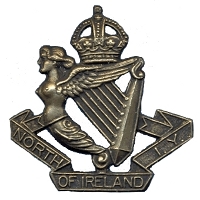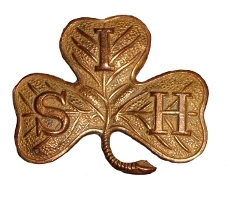1901:
| 45th (Dublin) Company, 46th (Belfast) Company, 47th (Duke of Cambridges, or Lord Doughmore’s) Company, 54th (Belfast) Company, 13th Battalion, 60th (North Irish Horse (Belfast)) Company, 61th (South Irish Horse (Dublin)) Company, 17th Battalion, 131st (Irish Horse) Company, 132nd (Irish Horse) Company, 133rd (Irish Horse) Company, 134th (Irish Horse) Company, 175th (Irish Horse) Company, 176th (Irish Horse) Company, 29th Battalion (Irish Horse), Imperial Yeomanry perpetuated by |


Imperial Yeomanry
Imperial Yeomanry

│

│
| transferred to The Special Reserve |
| transferred to The Special Reserve |
│
│

│

│
│
│
│
| transferred to The Royal Armoured Corps |
│

│


The Royal Yeomanry Regiment
(Volunteers)
│
(Territorials)
│
│
│
│
The North Irish Horse
│
│
│
│
32nd (Scottish) Signal Regiment,
Royal Signals
│
The North Irish Horse
│
│
│
│
│
│
│
69th (North Irish Horse) Squadron,
40th (Ulster) Signal Regiment,
Royal Signals
│
B (North Irish Horse) Squadron,
The Queen’s Own Yeomanry
│
│
│
│
│
│
│
│
40th (North Irish Horse) Squadron,
32nd Signal Regiment,
Royal Signals
│
B (North Irish Horse) Squadron,
The Scottish and
North Irish Yeomanry
│
│
│
│
│